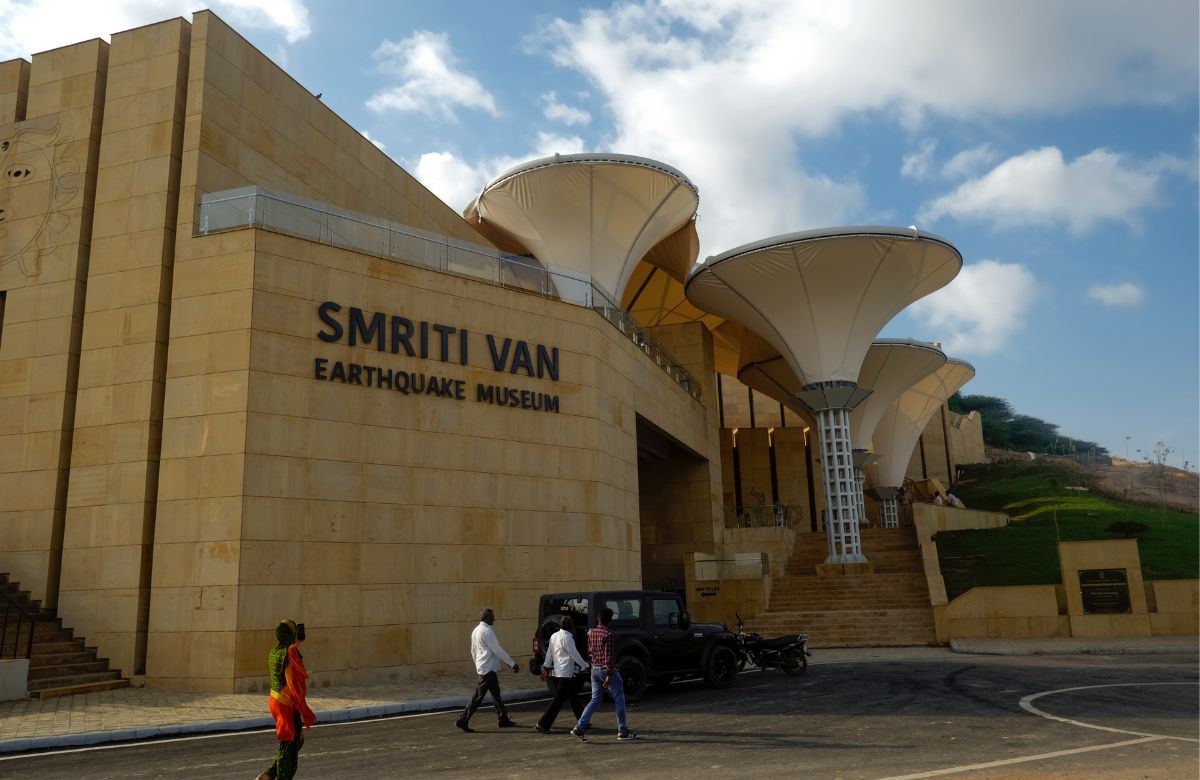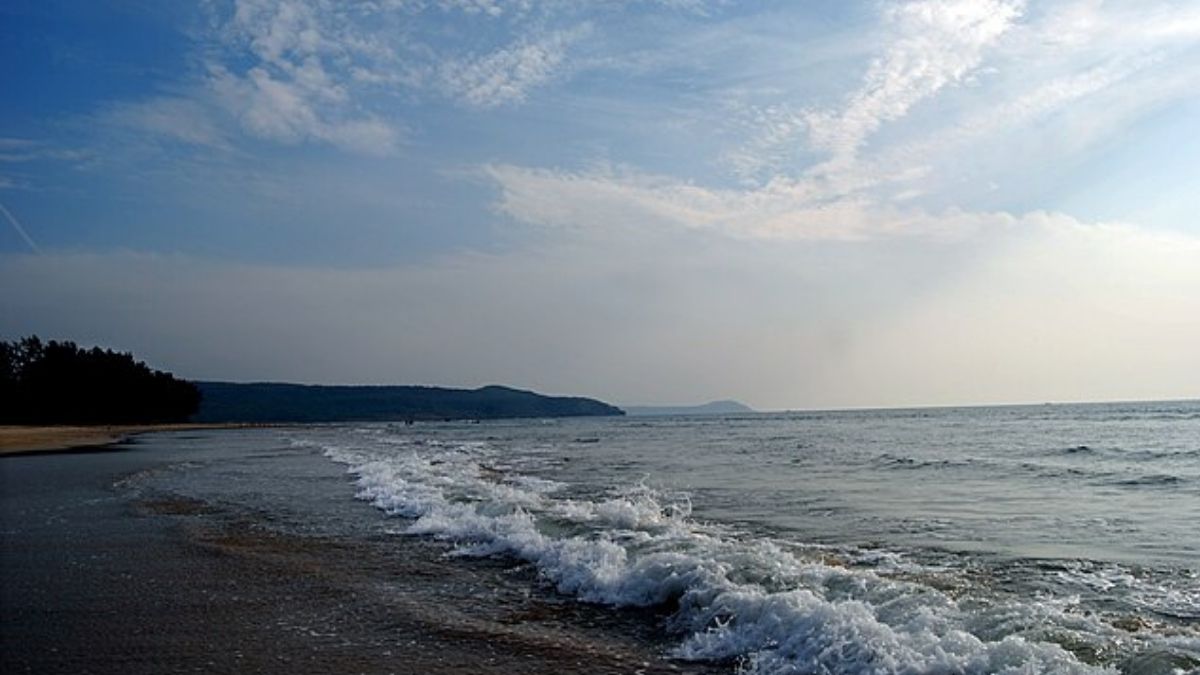Bhuj, in the region of Kutch, now has the Smritivan Earthquake Memorial Museum, another example of Gujarat’s architectural beauty. The museum in Bhuj is a testament to the resilience of the human spirit, dedicated to the memory of the devastating earthquake that struck the city in 2001.
About The Museum
View this post on Instagram
Spread across 470 acres, the concept features a network of monumental water reservoirs that display the names of the deceased while fostering biodiversity. The museum is built atop the Bhujiyo Dungar on the outskirts of Bhuj, sharing a part of its boundary with the 300-year-old Bhujia fort.
The building itself is a striking piece of architecture, with its unique design and use of materials. Ahmedabad-based architectural firm, Vastushilpa Sangath has built and designed this circular-shaped memorial. Moreover, the architecture comprises several sections, each with a different purpose.
Innovation is steeped in the making of this museum as well. Touch panels light a virtual flame that travels up the LED walls to the ceiling, blending with the light. In India, this is the largest installation of optical fibre sensor-based lighting.
Also Read: This Historic Stepwell In Patan, Gujarat, Is A UNESCO World Heritage Site You Need To Visit!
Why You Must Visit
View this post on Instagram
- Smritivan holds within itself the world’s largest Miyawaki forest. With over three lakh plants across the site, the forest has turned the memorial into a living monument. Additionally, the project brief included planting a tree for each victim, given by the then Chief Minister of Gujarat and now Prime Minister, Narender Modi.
- The memorial also features the 1.1-megawatt solar power plant, which powers the museum, and the memorial. It creates a self-sustainable and renewable power source.
- The memorial houses 50 check-dam reservoirs that have nameplates of the almost 13,000 victims of the earthquake. These reservoirs work to recharge the groundwater level of the area, which in turn replenishes the forest.
- The museum houses a spine-like installation at the centre of the museum that forms a direct connection between its different parts and offers a mesmerising view on each level.
- The museum also comprises seven galleries: Rebirth, Rediscover, Restore, Rebuild, Rethink, Relive, and Renew.
- The Restore gallery recounts the tragic events of the earthquake, including the rescue and relief activities whereas the Rebuild gives an understanding of the collective process of rebuilding, reconstructing and revival.
- Then, the Rethink gallery imparts knowledge about global disaster response and preparedness measures via interactive activities. Meanwhile, the Relive section is where you can experience tremors similar to those that shook Gujarat.
- Interactive activities in the Rethink gallery provide knowledge about global disaster response and preparedness measures. Alternatively, you can experience tremors similar to the ones that rocked Gujarat by visiting the Relive section. The Renew gallery pays respects to the deceased.
- For the ones into history, you can get to learn the Kutch region’s civilisations, Gujarat’s ancient trade routes, and the tales of its advancement and resilience via interactive models and immersive films.
The experience of this museum focuses on regeneration, sustainability, and a better future, which should be at the core of human life.
Where: Bhuj, Gujarat
When: 11 am – 7 pm
Cost: ₹ 100 (children up to 12 years), ₹ 150 (college students), ₹ 300 (adults) and ₹ 1,000 (foreigners)
Would you be visiting The Smritivan Earthquake Memorial Museum?
Cover image credits: Website/Gujarat Tourism
First Published: April 28, 2023 6:31 PM



